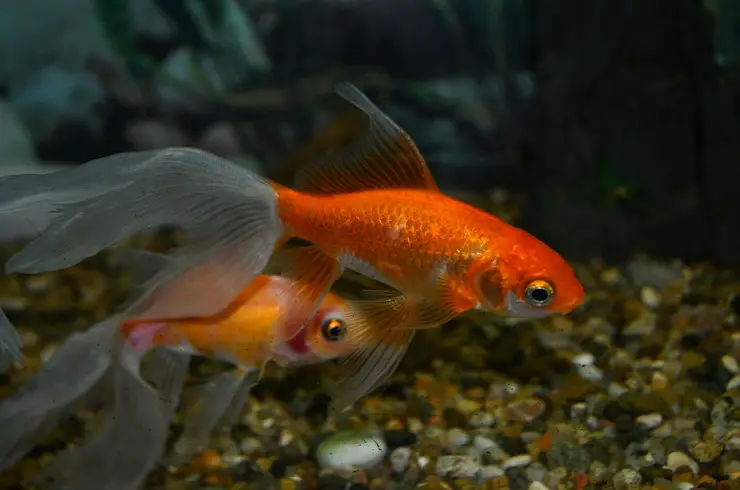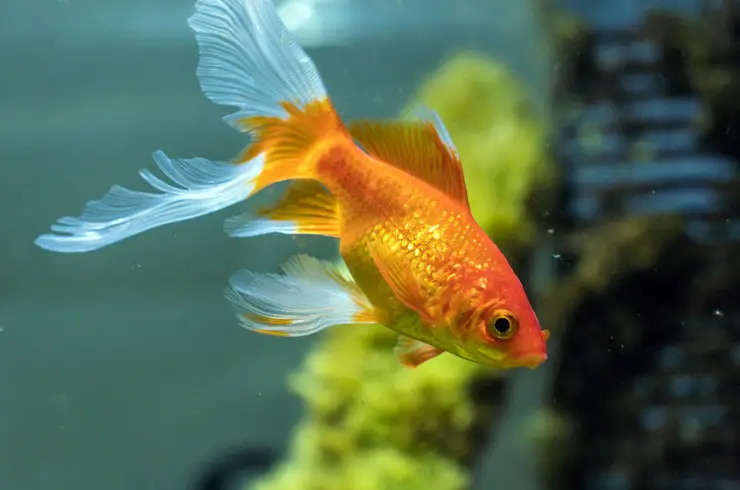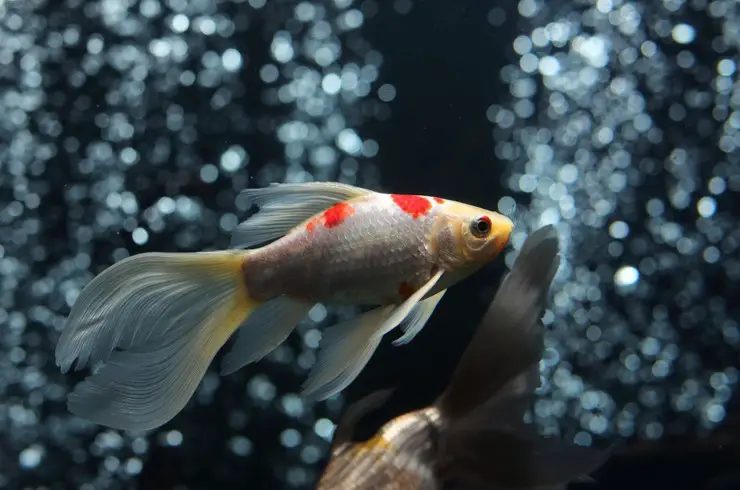All the variety of goldfish breeds can be divided into two main groups: short-bodied and long-bodied. The former, due to the rounded shape of the body, are quite unhurried, the latter are swift, their body is elongated. The most popular long-bodied goldfish is the comet. We will talk about it in our article.
General information
Comet (Goldfish Comet) is a selective form of goldfish, a distinctive feature of which is an elongated torpedo-shaped body and a single tail fin with ribbon-like blades. The breed got its name for its unusually developed tail.
Unlike most of their short-bodied companions (veil-tails, telescopes, ryukins, etc.), comets are very swift, prefer to move actively in the water column, and require a lot of space for swimming.
Otherwise, the comet inherited all the main features of other goldfish: large size, bright color, and unpretentiousness. Comets can be kept not only in an aquarium but also in decorative ponds.
Like other popular goldfish breeds, comets have their own standards, which serve as criteria for their evaluation at local and international exhibitions.
Appearance
The body of comets is torpedo-shaped, elongated with a slightly raised back. A bloated body is considered a breed marriage. The fish can grow up to 18 cm in size. The caudal fin is single, with a deep cut. Its length can exceed the size of the body several times, and the greater the difference, the more the individual is valued. The tail lobes are ribbon-shaped. The dorsal fin is high and even. There may be forms in which it, as well as the pectoral and pelvic fins, are veiled and hang in the form of ribbons. The beauty of the fins can even compete with the veil tail.
The color is very varied. Thanks to the labor of breeders, silver, gold, red-white, chintz, and other forms have been obtained. The classic color combination is red and white. The most valuable individuals are fish, the color of the fins of which differs from the main body color. For example, in China, forms with a silvery body and a lemon yellow or bright red tail are valued.
It should be noted that the brightness and saturation of the color directly depend on the conditions of detention. Among them, lighting, feeding, filtration play an important role.
History of appearance
It is still not known exactly where the comet was first displayed. Some sources attribute its origin to the American aquarist Hugh Mullet, who developed the breed in the early 1880s. However, it is believed that the first copies of comets were the result of the hard work of Japanese breeders, after which they already came to the United States. Most likely, the truth lies somewhere in between, and Mullet created a new breed based on material obtained from Japan. In any case, the fish has become very popular among aquarists.
Care and maintenance
To keep a flock of comets, first of all, you need a spacious aquarium. It is desirable that at least 40 liters of a waterfall on one individual. An elongated tank is ideal for maximum swimming space. Comets are very fast fish and in case of fright, they are able to swim almost instantly from one edge of the aquarium to another. Due to the very high swimming speed of comets, the aquarium should be covered with a lid to prevent fish from jumping to the floor.
It is best to choose large rounded pebbles as soil. Like other goldfish, comets are very fond of digging in the ground. Large stones will be harder for them to scatter. A variety of decorations can be installed in the aquarium, but it is advisable that they be without sharp edges so as not to accidentally damage the chic comet tail.
In aquariums with comets, close attention must be paid to quality filtration and aeration. Fish prefer bright lighting, moreover, in this light, they look the most attractive.
As for the parameters of the water, here the fish are quite unpretentious. Comets are cold-water fish, the optimal temperature will be 18-23 ° C. The acidity should be 6-8 units, and the hardness should be from 8 to 25 degrees. Comets tolerate salinity well up to 12-15 ‰, therefore, if necessary, water can be salted (at a concentration of 5-7 g per liter). Weekly water changes will have a positive effect on your pet’s health and well-being.
Live plants can be kept in an aquarium with comets, but it is worth remembering that delicate leaves and other parts of comet shoots will not mind eating at all. Therefore, it is better to give preference to rigid-leaved species (Cryptocorynes, Anubias, etc.) with a powerful root system. It will not be superfluous to enclose the roots of plants with large stones or other decorations so that the zloty fish do not dig them out.
Compatibility
Comets are quite peaceful fish, so they can become a decoration for a common aquarium. However, the species content is more preferable, while comets of different colors can be selected, and they can also be settled together with other types of goldfish (preferably with long-bodied breeds, for example, Shubunkin). Due to the similar conditions of detention and temperament, they will get along well together. It is better not to contain comets with inactive rocks (telescope, water eyes). The activity of the comets will keep them under stress. Also, more agile fish will eat food faster, leaving nothing to their fellows.
Joint maintenance with thermophilic species (scalars, discus) and small fish (neons, tetras) is not recommended. Comets can swallow small fish if they fit in their mouth. You can settle with them peaceful catfish – ancistrus and corridors. But it is better to exclude barbs, they are able to bite off long fins.

